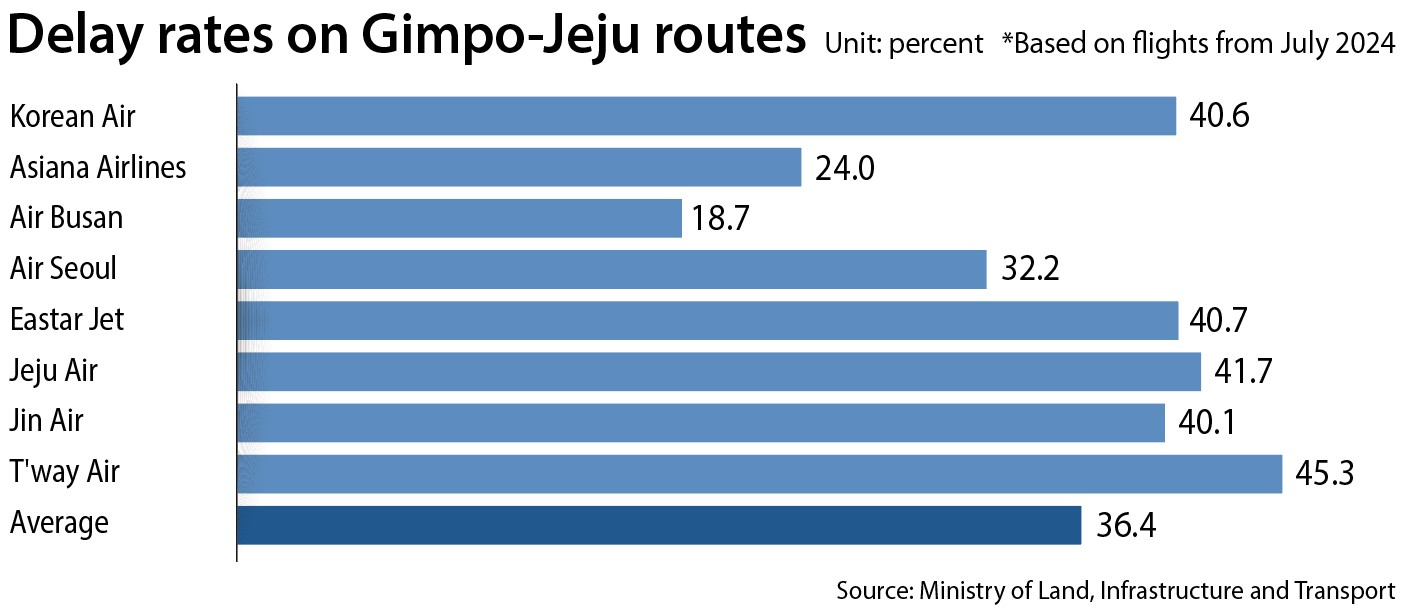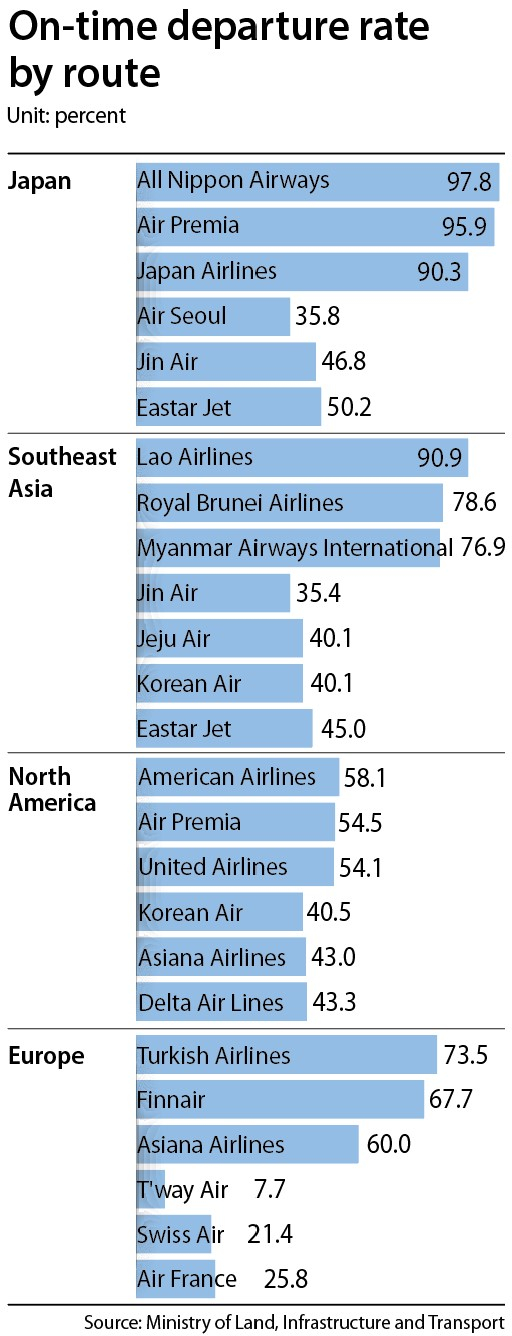Korean airlines delayed more than competitors, gov't data shows
Published: 03 Oct. 2024, 06:00
![Screens at Incheon International Airport display flight delays. [NEWS1]](https://koreajoongangdaily.joins.com/data/photo/2024/10/03/fb12fdfc-d9ba-4960-b09d-b7a19c826883.jpg)
Screens at Incheon International Airport display flight delays. [NEWS1]
Korean airlines are seeing more delays than their international competitors, according to the Ministry of Land, Infrastructure and Transport's July report. Only one category of flights from a domestic carrier, Asiana Airlines' routes to Europe, achieved a top-three on-time departure rate.
The report highlighted a concerning trend of increasing flight delays, leaving numerous travelers stranded at airports without adequate compensation.
The ministry’s July report, which records flights that take off more than 15 minutes after their scheduled departure time as delayed, shows that the flight delay rate of international flights surged to 40.9 percent, while that of domestic routes increased to 30 percent, from the previous month's rates of 30.6 percent and 17.5 percent respectively.
Impacts from the delay or cancellation of related flights are the most common factor holding up flights, according to the report, accounting for 52.6 percent of domestic delays and 79.1 percent of those impacting international routes. Air traffic flow, which refers to the management of aircraft traffic in the airspace, is the next most common factor at 18 percent, followed by immigration control at 17.6 percent of delays and weather conditions at 3.3 percent.

The ministry's report also ranked specific routes and airlines based on the frequency and duration of flight delays. Flights to Southeast Asia recorded highest delay frequency at 52.4 percent, significantly exceeding the overall average of 40.9 percent. Among flights operated by specific airlines, Air Seoul's Japanese routes experienced a 35.9 percent delay rate while 35.4 percent of Jin Air's flights to Southeast Asia departed late, 40.5 percent of Korean Air's routes to North America and 23.2 percent of Qantas's trips to Oceania.
Air Seoul had the highest overall delay rate of domestic carriers during the first seven months of this year, with 2,476 of the 5,678 international flights the airline operated in July departing late. Airlines with the highest on-time departure frequency included All Nippon Airways, 97.8 percent of whose Japanese flights took off punctually; Lao Airlines, whose Southeast Asian routes achieved 90.9 percent; and Turkish Airlines, whose trips to Europe departed on time at a rate of 73.5 percent.

Most domestic airlines follow the Fair Trade Commission's standards, which stipulate compensation rates of 10 to 20 percent for delays of two to four hours, 20 percent for delays of four to twelve hours and 30 percent for delays exceeding twelve hours while the Montreal Convention allows for compensation of approximately $7,323. The report also found, however, that most airlines offer compensation only when flight delays are directly caused by aircraft component failures, excluding cases of extreme weather, runway congestion or other external factors. leaving many travelers with inadequate compensation or only meal vouchers and leading to legal disputes.
To minimize flight delays, experts quoted in the report advise careful planning and informed decision-making while cautioning against bundled flight deals — which often involve multiple airlines, increasing the risk of delays. They also say that searching for airlines with a strong on-time performance record can significantly reduce the risk of disruptions, adding that purchasing travel insurance with flight delay coverage can also provide financial protection against unexpected expenses, such as meals, accommodation or other travel costs incurred due to delays.
Korean Air canceled a flight to Korea in August that left more than 300 passengers stranded in London for 21 hours and 5 minutes.
Some 170 Korean Air passengers faced delays in Jeju the same month after a defect was discovered on one of the carrier's aircraft, affecting other flight schedules as well.
BY CHOI SEUNG-PYO [yoon.seungjin@joongang.co.kr]










with the Korea JoongAng Daily
To write comments, please log in to one of the accounts.
Standards Board Policy (0/250자)